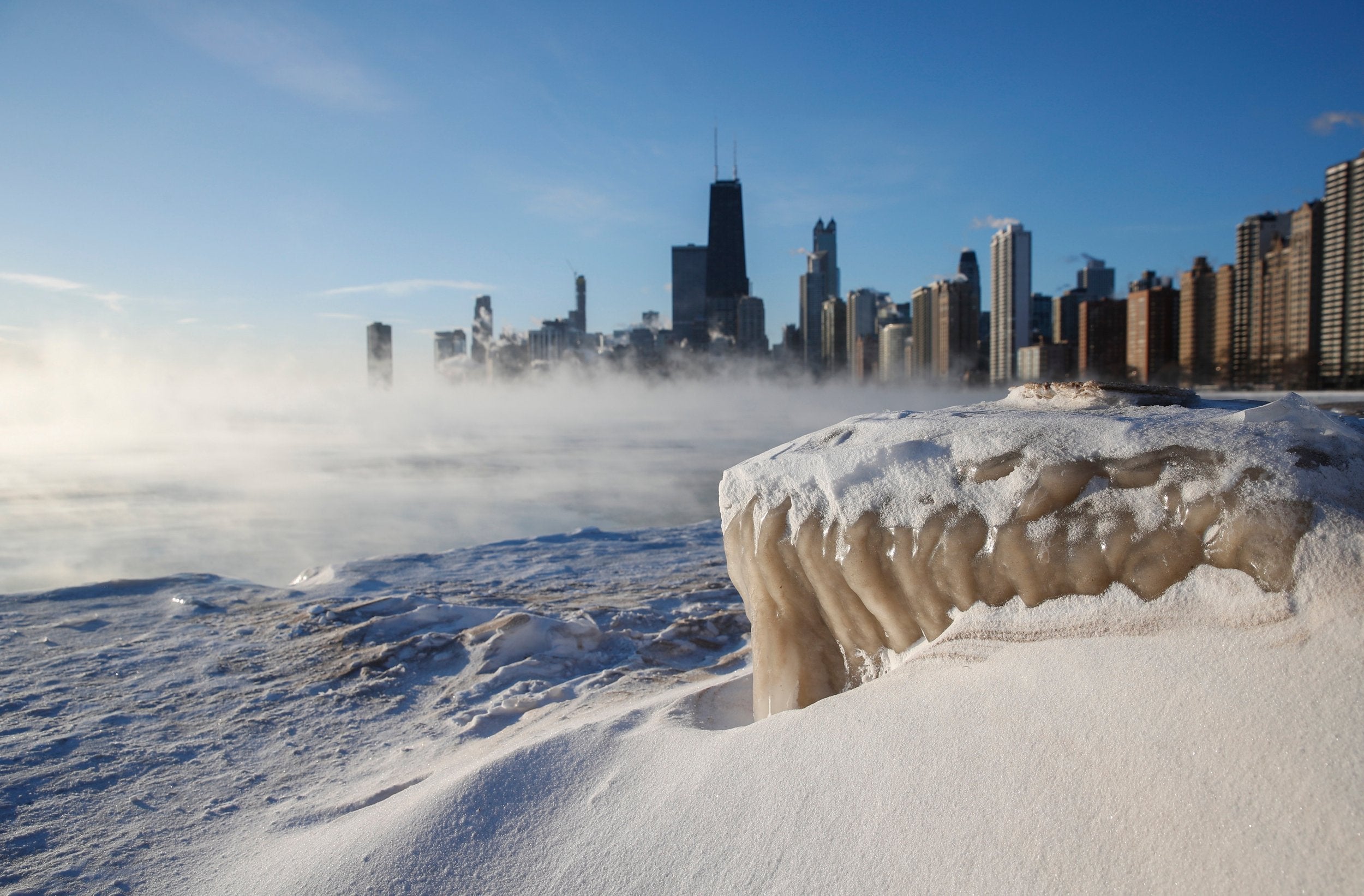Polar vortex: 12 dead as US weather system brings record low temperatures approaching -50F
Arctic air blasts across United States as nation's infrastructures is strained and death toll rises

Your support helps us to tell the story
From reproductive rights to climate change to Big Tech, The Independent is on the ground when the story is developing. Whether it's investigating the financials of Elon Musk's pro-Trump PAC or producing our latest documentary, 'The A Word', which shines a light on the American women fighting for reproductive rights, we know how important it is to parse out the facts from the messaging.
At such a critical moment in US history, we need reporters on the ground. Your donation allows us to keep sending journalists to speak to both sides of the story.
The Independent is trusted by Americans across the entire political spectrum. And unlike many other quality news outlets, we choose not to lock Americans out of our reporting and analysis with paywalls. We believe quality journalism should be available to everyone, paid for by those who can afford it.
Your support makes all the difference.The polar vortex in the US continued inflicting severe conditions across the country on Thursday, with temperatures reaching minus 40F - and a town in Michigan called Hell quite literally freezing over.
Chicago was on track to break the city’s record of -32C (-26F), set more than 30 years ago as the cold snap intensifies.
Some nearby isolated areas could see temperatures as low as -40C (-40F), that would break the Illinois record of minus 38C (-36.4F) set in 1999.
Milwaukee had similar conditions. Minneapolis recorded -32C (-26F) while Sioux Falls, South Dakota, saw -31C (-24F).
Wind chills reportedly made it feel like -45C (-49F) or worse.
The blast of polar air that enveloped much of the Midwest on Wednesday closed schools and businesses and strained infrastructure with some of the lowest temperatures in a generation.
The deep freeze snapped rail lines, cancelled hundreds of flights and strained utilities.
Trains and buses in Chicago operated with few passengers as the hardiest commuters ventured out only after covering nearly every square inch of flesh against the extreme chill, which froze ice crystals on eyelashes and eyebrows in minutes.
Crews in Detroit will need days to repair water mains that burst on 30 January, and other pipes can still burst in persistent subzero temperatures.
Temperatures are expected to improve later this week and more people are expected to return to work in the nation’s third largest city.
Meanwhile, cities like Chicago reportedly experienced "frost quakes," a phenomenon caused by freezing and expanding water under the ground and causes earthquake-like effects.
See The Independent's live coverage of the polar vortex across the United States on Thursday as it happened below:
Please allow a moment for the liveblog to load
The United States isn't the only place dealing with severe cold weather conditions.
On the other side of the pond, British Airways has been forced to cancel a number of short-haul flights because of "adverse weather conditions".
The National Weather Service has released the following message warning people of how “cold weather can be life-threatening,” along with tips on how to stay safe during the polar vortex.
Satellite views of Lake Erie and Lake Ontario show the lakes covered in ice today as the polar vortex continues sending blasts of cold air across the Midwest.
The arctic cold blasting through the United States makes for some interesting science projects.
Take, for example, in Chicago, where snow is being made from vents billowing steam during the historic chills. The vapor almost immediately turns into ice crystals, which then form the snowy undersides of objects kept outside.
As Donald Trump has claimed the record low temperatures are a sign that global warming is “fake news,” a new study shows the rate of melting ice in Antarctica has sped up almost six times faster than the rate in the 1980s.
That's all from today's live coverage of the polar vortex in the United States. For more, here's The Independent's full report from Thursday:


Join our commenting forum
Join thought-provoking conversations, follow other Independent readers and see their replies
Comments